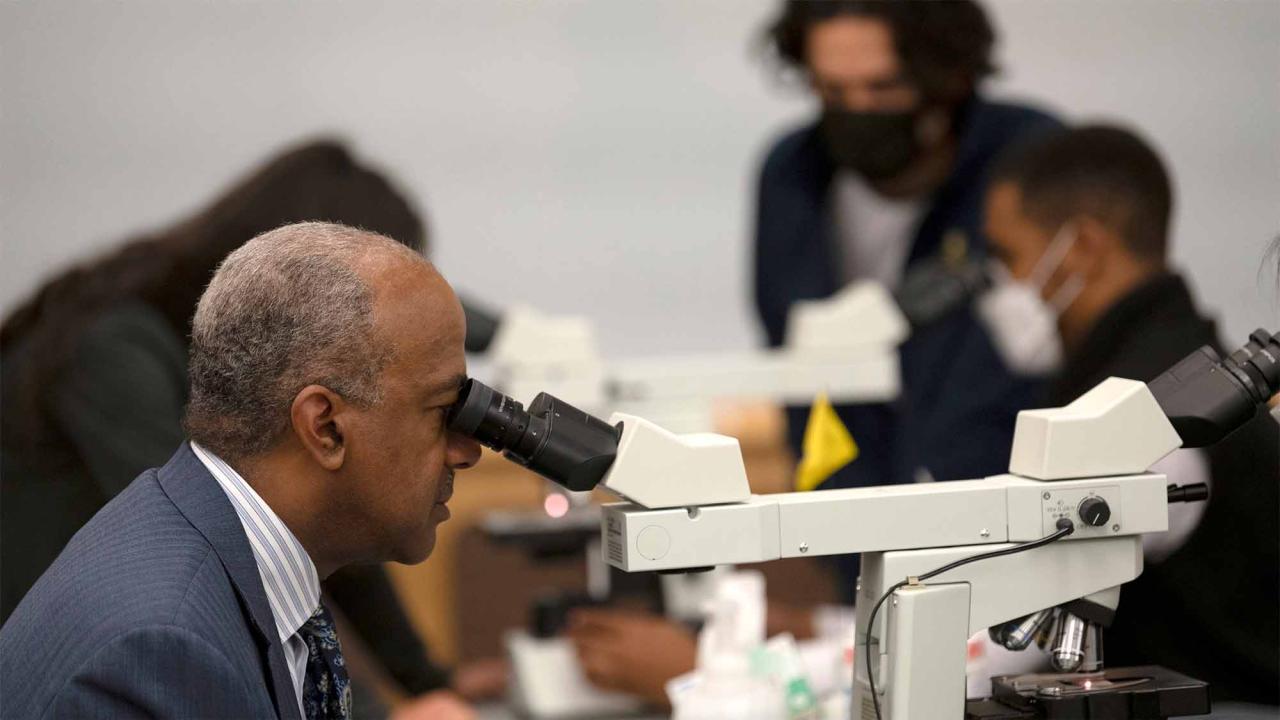At UC Davis, one of our defining goals is enabling research that transforms lives and communities, right here in our city and around the world.

Federal funding from the National Institutes of Health, or NIH, the National Science Foundation, or NSF, and other agencies plays a critical role in strategic preparations for the next generation of leaders, innovators and scientists. However, given the ongoing uncertainty with federal support, much of this funding is in jeopardy.
Our researchers are experts like Dr. Diana Farmer, renowned fetal and neonatal surgeon and chair of the UC Davis Department of Surgery, who depends on federal funding for research to explore treatments that could reduce disabilities and give children with more independence. She shares concerns about the state of federal research funding in our newly launched “From Labs to Lives” website and digital series: “If this funding were to go away, or frankly even be reduced, we would stop having cures for many diseases.”
UC Davis is classified as an R1 research university, which marks those with the highest level of research activity. Out of nearly 6,000 colleges and universities in the nation, UC Davis is one of 187 institutions with R1 designation.
Our most recent numbers show that UC Davis supports $2 billion in California research-related economic activity and nearly research-related 10,000 jobs.
A major potential impact
A proposed 15% cap on NIH reimbursement for facilities and administration costs, or F&A, would be devastating. If the rule were applied to this year, it would result in a loss of $70 million in research funding at UC Davis. The impact would stretch beyond UC Davis to the research community at large.
To help people understand the F&A costs to do research, I use a simple analogy about milk and a refrigerator. Imagine you visit the grocery store to purchase some milk. The milk itself constitutes your direct cost. However, you also incur indirect costs, such as the refrigerator and the expenses needed to keep the milk cold. These costs include the need for a storage space for the milk, the utilities required to maintain its freshness, and someone to monitor and replenish when the product has expired, as well as clean up any milk that spills.
The cost of doing research includes research infrastructure expenses, such as buildings, compliance and regulatory staff, computing and utilities. It goes toward essential staff who ensure that safety measures and protections for human and animal research are in place. The university and the federal government both contribute to these research costs.
In researchers’ own words
“From Labs to Lives” spotlights a wide range of UC Davis researchers who share their work and address why federal funding is crucial for making discoveries. Rebecca Calisi Rodríguez, an associate professor of neurobiology, physiology and behavior, leads NSF-funded research to understand how chronic stress affects the brain health of parents. By studying the biological mechanisms behind chronic stress, she hopes to find better ways to support positive child development and the well-being of families.
“Government agencies like NIH and NSF, they are the backbone of research in the United States,” she says. “If funding is cut, it won’t just affect scientists. It will slow down the discoveries that save lives.”
Nicholas Pinter, a professor of Earth and planetary sciences, focuses on natural hazards and disaster risk reduction at the UC Davis Center for Watershed Sciences. He studies how waterways evolve over time, which can lead to better strategies for floodplain management and protecting vulnerable communities.
“That (NSF) research has been an engine for innovation and economic growth,” Nicholas says. “And until now, we never thought that things could unwind so quickly … We’re looking at the threat of a sudden turning off of that engine.”
Another benefit of federally funded research is that it attracts the next generation of the workforce to continue to improve lives and solve global problems, keeping America at the forefront. Mark Huising is professor of neurobiology, physiology and behavior physiology, and membrane biology in the College of Biological Sciences. His diabetes research involves studying how beta cells in the pancreas work together with neighboring cells that secrete other hormones that control insulin secretion. “(Reduced federal funding) is already stymieing the vital trainee pipeline that U.S. biotech and pharmaceutical companies rely on to maintain the edge in their internationally competitive fields.”
You can find nearly two dozen researchers featured in our “From Labs to Lives” series, and more will be added in the coming weeks.
In the meantime, we will continue monitoring the federal landscape and stay committed to unlocking advancements for the greater good of our communities and the planet.
Chancellor Gary S. May’s monthly column is published in The Davis Enterprise and Dateline UC Davis.
